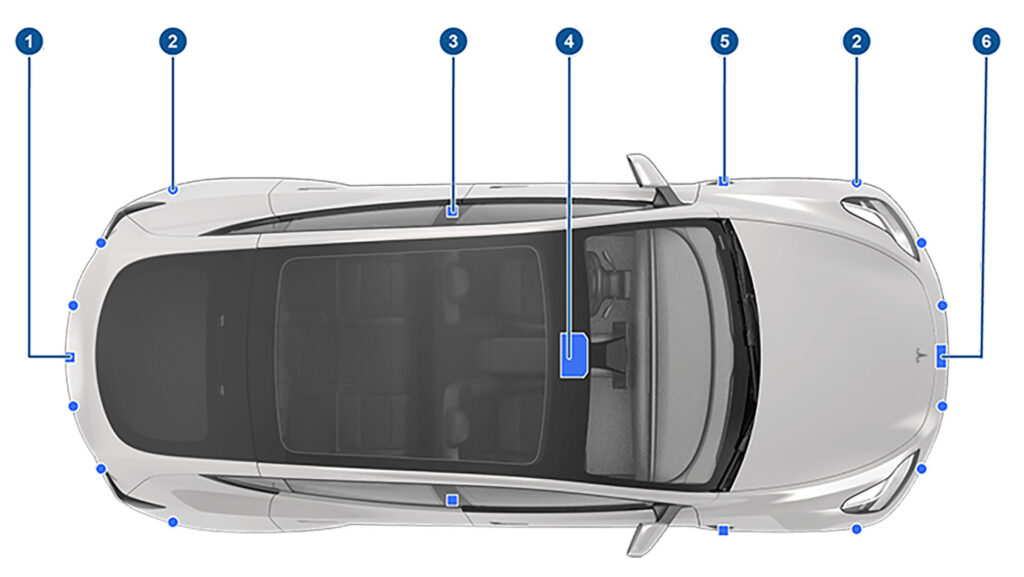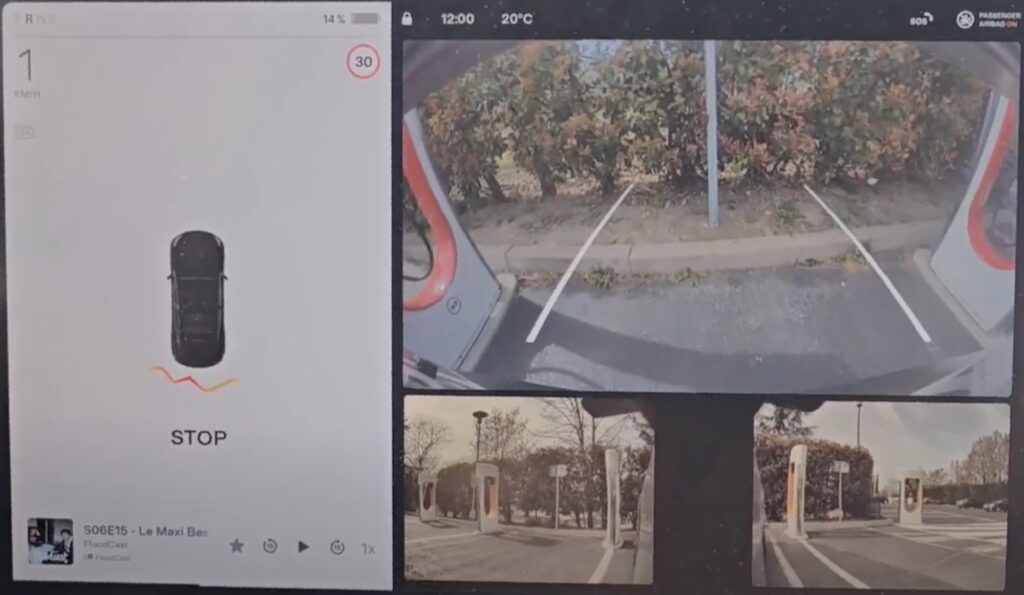The update to overcome the lack of proximity sensors on the new Tesla has just been deployed. Except that the solution via Tesla Vision is anything but satisfactory. Let’s do a check in.
Tesla is not at its first attempt when it comes to removing a hardware element from its cars. Between rain sensors, radar and now ultrasonic sensors, current Teslas rely on software rather than hardware to meet different needs.
In theory, everything is fine. The on-board software is on point and what Tesla offers its users suits them. As far as Tesla Vision for parking is concerned, it is clear that the physical limits of this camera-based innovation are far too great to be able to trust it in all circumstances.
More than six months without parking assistance
When, at the end of the summer of 2022, Tesla announced the disappearance of the ultrasonic sensors from its Model 3 and Model Y, many customers began to fear the worst to park their 4.70 meter long car. Until then – and this is the case in almost all vehicles in these segments – Teslas displayed the remaining distance before an obstacle in front or at the rear of the vehicle.
In addition, a line materialized the obstacle, and according to the preferences of the driver, a warning buzzer could sound when one approached a little too much. In sum, a very classic experience on a vehicle from 40,000 to 80,000 euros to facilitate maneuvers.
However, Tesla really doesn’t do everything like everyone else. The company has therefore confirmed on its website the removal of these ultrasonic sensors allowing this famous parking aid. During the announcement in the fall of 2022, here is what Tesla specified on its website: “for a short time during this transition, Tesla Vision vehicles that are not equipped with ultrasonic sensors will ship with certain features temporarily limited or inactive”. Among these “some features”there were actually 4 different functions, all dedicated to parking: park assist, auto park, auto exit and intelligent auto exit.
Once again, a victim of the well-known “ Elon Time »Tesla owners found themselves without parking assistance “for a short time” having lasted more than six months. Parking assistance by Tesla Vision finally arrived, and we were able to ride around it in many situations.
Tesla Vision: you can’t trust it
To put it simply: Tesla Vision does not replace ultrasonic sensors. What many Tesla owners feared is now turning out to be very true.
Tesla Vision relies on a vision-based occupancy network to replace data generated by ultrasonic sensors. In other words, it involves processing the data received by the vehicles’ eight cameras (three on the top of the windshield, two on the front fenders, two at door level, and one at the rear) to estimate this who is in the vicinity of the car, and how far away any obstacles are.

Unlike an ultrasonic sensor which gives exact information based on the travel time of a wave, Tesla Vision has to guess what the cameras are seeing, as well as how far away all that information is.
This method is already used, with varying degrees of success, for Tesla’s adaptive cruise control and steer assist. But the precision required for this is not counted in centimeters, unlike the help expected for parking maneuvers.
The few blind spots, linked to the placement of the various cameras on a Tesla, turn out to be very problematic, where the ultrasonic sensors provided the desired service. This is noticeable, for example, just in front of the front bumper, if an obstacle less than 40 centimeters high is present.
This kind of obstacle, which can be a small low wall or a child’s bike abandoned carelessly on the ground, is difficult to see by the cameras located at the top of the windshield, whereas for the ultrasonic sensors this posed no problem.
Some imagined that the solution via Tesla Vision would lead to more advanced parking assistance than the traditional method, because the cameras covered a larger area than the sensors. If it is true that the sensors were present only on the bumpers while there are cameras on the sides of the Tesla Model S, Model 3, Model X and Model Y, it is unfortunately too simple to take them into account. default.
Parking aid unavailable: a novelty that we would have done well without
One of the first differences between Tesla Vision and ultrasonic sensors occurs when the cameras are dirty, obstructed, or simply when it’s dark.
These situations, which do not alter the operation of the USS sensors at all, represent real challenges for the cameras surrounding a Tesla. As it stands, as soon as a camera is obstructed, for example, parking assistance is unavailable. If, unfortunately, you have dirt or water on the rear camera due to road conditions, you will no longer be able to rely on the parking aid, even when driving forwards.
A visibility problem on a single camera completely removes the parking aid. And unfortunately, it is a situation that is relatively frequent. If bad weather sets in, be prepared to have no parking aids until the cameras are clean.
Finally, another novelty that we did not expect: when starting the vehicle, a message now appears inviting you to wait while the parking aid is loading. The ultrasonic sensors on their side give the information immediately, while the Tesla Vision must recover the information that was recorded when the car was parked, which is far from ideal. In the absence of motion, the vision-based occupancy network cannot determine the distances at which obstacles are located. And we will see that even in motion, these measurements are sometimes far from reality.
Measurements too approximate
What is most unacceptable, in the current operation of the Tesla Vision parking assistance, is that even in an ideal situation, the distance measurements are not reliable enough for us to be able to trust the system.
As an example, the distance indication stops at 30 centimeters, after which it says “STOP”, and a sound indicator sounds continuously if you have activated it in the settings. If indeed you are 30 centimeters from a wall, it may be appropriate to stop so as not to tempt fate. In practice, during our various tests, we were often much further than what Tesla Vision indicated, and even outside certain parking lot markings.

Between distance errors and the occasional undetected obstacle, and adding unavailability when conditions aren’t perfect, it’s currently impossible to be satisfied with Tesla Vision.
Can we imagine that it improves over time? It is not guaranteed, some features have been unsatisfactory for years, such as the auto exit which does not improve for example. Let’s give Tesla the benefit of the doubt, however, and hope that as software updates roll out, parking assistance via Tesla Vision finally becomes trustworthy.
The electric automobile is a booming sector, but you still need the keys to understand it. Subscribe to Watt Else, Numerama’s free newsletter, guaranteed 100% without jargon on the mobility of tomorrow.
The data transmitted through this form is intended for PressTiC Numerama, in its capacity as data controller. These data are processed with your consent for the purpose of sending you by e-mail news and information relating to the editorial content published on this site. You can oppose these e-mails at any time by clicking on the unsubscribe links present in each of them. For more information, you can consult our entire personal data processing policy.
You have a right of access, rectification, erasure, limitation, portability and opposition for legitimate reasons to personal data concerning you. To exercise one of these rights, please make your request via our dedicated rights exercise request form.
If you liked this article, you will like the following ones: do not miss them by subscribing to Numerama on Google News.
